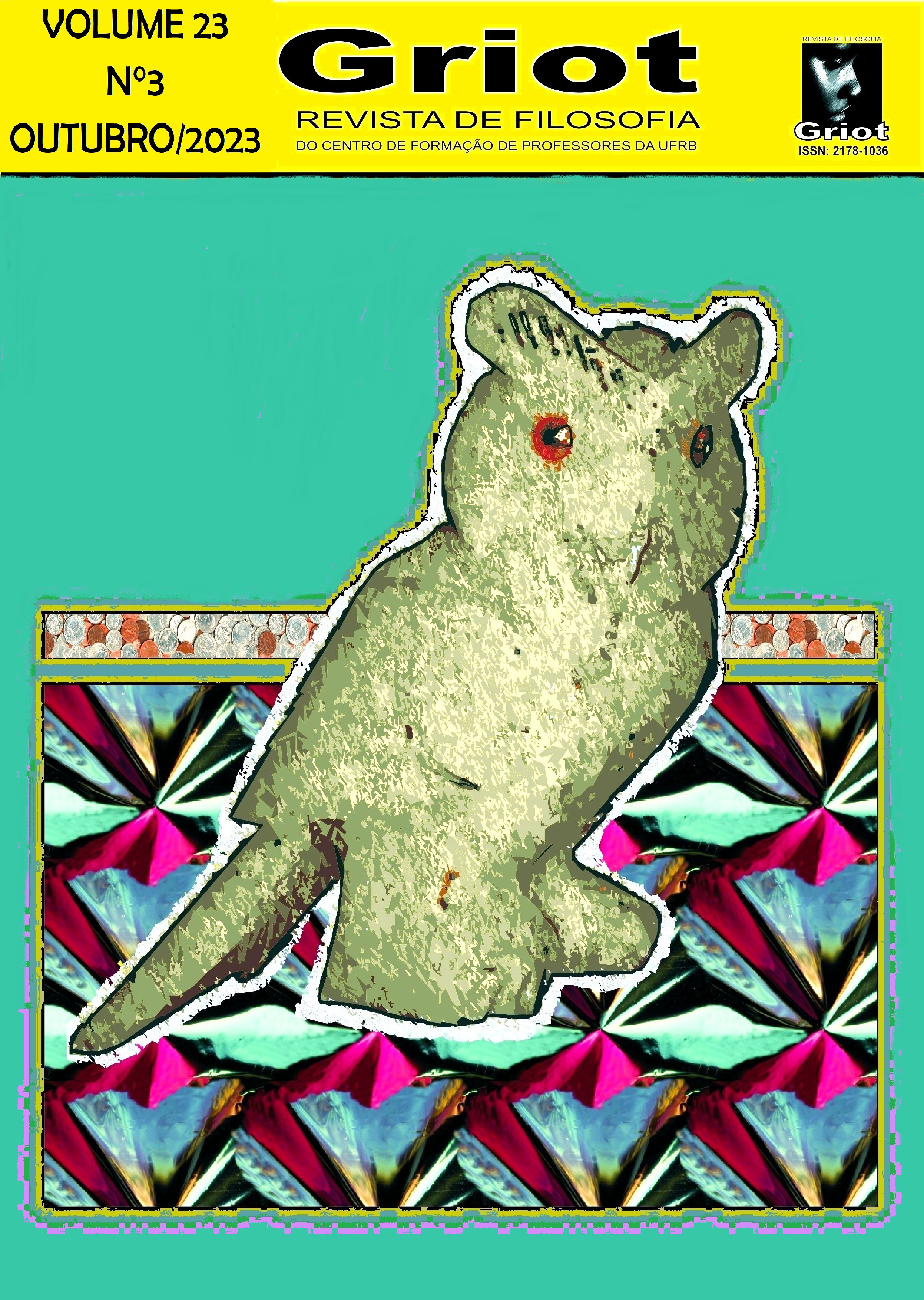The bread making machine: an analysis of the tacit knowledge involved in the exercise of practical skills and the behavior of artifacts
DOI:
https://doi.org/10.31977/grirfi.v23i3.3536Keywords:
Bread making machine; Master baker; Tacit knowledge; Practical skills; Aspectual representations.Abstract
In the late 1980s, Matsushita Electric Industrial Co. Ltd. released the first home-use bread making machine. Its launch was so successful that knowledge sociologists undertook the task of analyzing the knowledge involved in its design and production. To accomplish this, Takeuchi and Nonaka (1995) extensively examined the concept of tacit knowledge (POLANYI, 1966/2009). They argued that engineers and developers managed to articulate and translate the tacit knowledge inherent in the skilled practice of a master baker into the design of the bread-making machine, reproducing the same practical outcome. In the present study, I will discuss their interpretation of the notion of tacit knowledge and contend that the tacit knowledge involved in the exercise of practical skills cannot be articulated and translated into the design of the bread making machine without losing, at the very least, a substantial portion of those skills. To support this argument, I will draw on contributions from the sociology of science and phenomenology to argue that the tacit knowledge embedded in the skilled practice of our master baker depends on a familiarity relationship with the environment. This relationship is epistemically relevant insofar as it involves aspectual representations of our environment, which guide the actions of our master baker. In contrast, the bread making machine lacks such representations and, as a result, cannot involve, at the very least, the same type of tacit knowledge as a guide for its behavior.
Downloads
References
BENDER, Emily M., & KOLLER, Alexander. Climbing towards NLU: On Meaning, Form, and Understanding in the Age of Data. En Proceedings of the 58th Annual Meeting of the Association for Computational Linguistics, 5185-98. Online: Association for Computational Linguistics, 2020. https://doi.org/10.18653/v1/2020.acl-main.463.
CHOMSKY, Noam. Knowledge of language: Its nature, origin, and use. Praeger: New York, 1986.
CHOMSKY, Noam. The Minimalist program. The MIT Press: Cambridge, MA, 1995.
CLARK, Andy, & GRUSH, Rick. Towards a cognitive robotics. Adaptive Behavior, v.7, n.1, p. 5-16, 1999. https://doi.org/10.1177/105971239900700101
COLLINS, Harry. Tacit and explicit knowledge. London: The University of Chicago Press, 2010.
COLLINS, Harry, & EVANS, Robert. Rethinking expertise. Chicago: University of Chicago Press, 2008.
COLLINS, Harry, & KUSCH, Martin. The shape of actions: What humans and machines can do. Cambridge, Mass: MIT Press, 1999.
COLLINS, Harry., & RIBEIRO, Rodrigo. The bread-making machine: Tacit knowledge and two types of action. Organization Studies, v.28, n.9, p. 1417-1433, 2007.
DREYFUS, Hubert. What computers can’t do: The limits of artificial intelligence (Rev. ed). Harper & Row, 1979,
GASCOIGNE, Neil, & THORNTON, Tim. Tacit knowledge. London: Routledge, 2014.
HEIDEGGER, Martin. Los conceptos fundamentales de la metafísica: Mundo, finitud, soledad (trad. A. Ciria) [curso de Friburgo, semestre de invierno 1929 - 1930]. Alianza editorial, 2007 (Obra original de 1983)
HEIDEGGER, Martin. Ser y tiempo. Madrid: Editorial Trotta, 2000 (Obra original de 1927)
HUSSERL, Edmund. Meditaciones cartesianas (2 ed., aumentada y rev). Fondo de Cultura Económica, 1986 (Obra original de 1931)
LAKE, Brenden M.; ULLMAN, Tomer D.; TENENBAUM, Joshua B.; & GERSHMAN, Samuel J. Building Machines That Learn and Think like People. Behavioral and Brain Sciences 40, 2017. https://doi.org/10.1017/S0140525X16001837.
MARCUS, Gary. The Next Decade in AI: Four Steps Towards Robust Artificial Intelligence, 2020. https://doi.org/10.48550/ARXIV.2002.06177.
MERLEAU-PONTY, Maurice. Fenomenología de la percepción. Fondo de Cultura Económica, 1957 (Obra original de 1945)
MILLIKAN, Ruth. Pushmi-pullyu representations. Philosophical Perspectives, n. 9, p. 185-200, 1995. https://doi.org/10.2307/2214217
MINSKY, Marvin, & PAPERT, Seymour. Proposal to ARPA for Research on Artificial Intelligence at MIT, 1970–1971 (draft), 1970.
NONAKA, Ikujiro. The knowledge-creating company. Harvard Business Review, 2007. https://hbr.org/2007/07/the-knowledge-creating-company.
NONAKA, Ikujiro, & TAKEUCHI, Hirotaka. The knowledge-creating company: How Japanese companies create the dynamics of innovation. New York: Oxford University Press, 1995.
POLANYI, Michael. Personal knowledge: Towards a post-critical philosophy. Chicago: University of Chicago Press, 2015 (Obra original de 1958)
POLANYI, Michael, & PROSCH, Harry. Meaning. Chicago: University of Chicago Press, 1975.
POLANYI, Michael. The tacit dimension. Editado por Amartya Sen. Chicago, IL: University of Chicago, 2009 (Obra original de 1966)
ROWLANDS, Mark. Body language: Representation in action. Cambridge MA: Bradford Book/MIT Press, 2006
RYLE, Gilbert. (1949). The concept of mind. Senior series. London, New York: Hutchinson’s University Library, 1949.
TRUBODY, Ben. When Tacit is Not Tacit Enough: A Heideggerian Critique of Collins’ “Tacit” Knowledge. Meta: Research in Hermeneutics, Phenomenology, and Practical Philosophy, v. 5, n. 2, p. 315-335, 2013.
von UEXKÜLL, Jacob. (2021). Environment and inner world of the animals. Independently Published. (Obra original de 1904).
WHEELER, Michael. Reconstructing the Cognitive World: The Next Step, Cambridge, MA: MIT Press, 2005.
Downloads
Published
How to Cite
Issue
Section
License
Copyright (c) 2023 Sofia Mondaca

This work is licensed under a Creative Commons Attribution 4.0 International License.
The authors who publish in Griot: Revista de Filosofia maintain the copyright and grant the magazine the right of first publication, with the work simultaneously licensed under the Creative Commons Attribution 4.0 International License, allowing sharing and adaptation, even for commercial purposes, with due recognition of authorship and initial publication in this journal. Read more...









































































